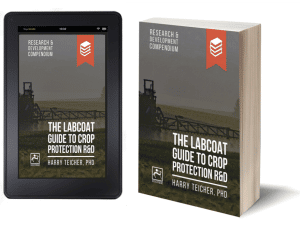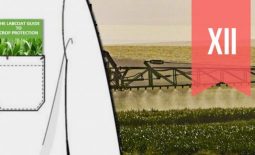Five Top Trends for Biological Pesticides in 2020
The dawn of a new decade is a great opportunity to evaluate the evolving trends and technologies which are giving biological pesticides an increasingly competitive edge. Here are five to watch in 2020:
1. Biologicals market growth will continue to outpace conventional pesticides
Estimates of global market sizes for crop protection products (conventional pesticides as well as biopesticides) vary, but the general consensus is that biopesticides are expected to increase from about 2% of the global pesticide market in 2003 to about 8% of the global pesticide market (estimated to exceed 82 billion USD) in 2020.
The current opinion is that the compound annual growth rate (CAGR) for biopesticides during this period is expected to exceed 12%, compared to a projected overall pesticide CAGR of about 5%.
2. Biologicals start-ups will continue to dominate innovation

Following recent corporate mergers, focus appears to be on integration, with less attention being placed on the acquisition of biological candidates or start-ups. In contrast, biologicals start-ups are responding to increasing demands for biological pesticides, developing new solutions, and entering high-value markets. As corporations return their focus to innovation and R&D activities, these start-ups can be expected to be targets for acquisition.
3. Solo biologicals will increasingly be replaced by integrated solutions
While solo biological products have been the focus of development strategies, the need to improve the efficacy of biologicals is driving attention to integrated approaches, such as the inclusion of biologicals in IPM integrations, and the optimization of biologicals application through field-level monitoring and precision ag, leveraging the ability to monitor pest and pathogen dynamics in the field.
Together, conventional and biological combinations can provide the required level of pesticidal efficacy while allowing a reduction in the use of chemical actives as well as reducing the risk of resistance. However, registration challenges can be expected to curb the development of combination chemical and microbial products in favor of tank-mix solutions.
4. Recent advances in agrobiological knowledge will increase biologicals efficacy and reduce variability
Improving biologicals efficacy and reducing their variability will be facilitated by the increased implementation of agrobiological knowledge, through an improved understanding of biologicals mode-of-action as well as the integration of inducible plant defense responses.
The ability of growers to combine the use of biologicals with the ability of crops to induce defense responses will depend on an understanding of the mediators and kinetics of plant defense induction, and increasingly knowledge-based biological development and marketing strategies can be expected.
Continued focus on biopesticide formulation – especially the development of biogenic micro- and nanocapsules – will allow the inclusion of natural elicitors of plant defenses while facilitating the protection and timely release of biological agents and metabolites.
5. Local environmental conditions and requirements will drive targeted sourcing and positioning
Biologicals efficacy is heavily dependent on environmental conditions, and we should expect to see an increased focus on sourcing and positioning biologicals into local environments.
While developing countries are promoting the use of locally sourced biologicals through simplified registration, R&D grants and the support of local production units, it is expected that scouting for microbial candidates will also become more prevalent in EU regional environments and that EU commercial focus will extend from agriculture to horticulture and forestry.
_______________________________
Thanks for reading – please feel free to read and share my other articles in this series!
THE LABCOAT GUIDE TO CROP PROTECTION R&D – the compiled version of the first three books in the LABCOAT GUIDE TO CROP PROTECTION series – is now available in eBook and Print on Amazon.

Aimed at students, professionals, and others wishing to understand basic aspects of Crop Protection Development, this book is an easily accessible introduction to essential principles of Pesticide and Biopesticide Mode Of Action and Formulation, Biostatistics as well as Strategic R&D Management for Pesticide & BioPesticide R&D.
Check out http://getbook.at/LABCOAT_GUIDE_Compiled to get an insight into this rapidly-growing industry!
By purchasing the print edition of this book, you are eligible for a FREE download of the eBook version, providing access to high-resolution, zoomable color images.


